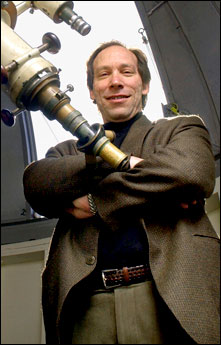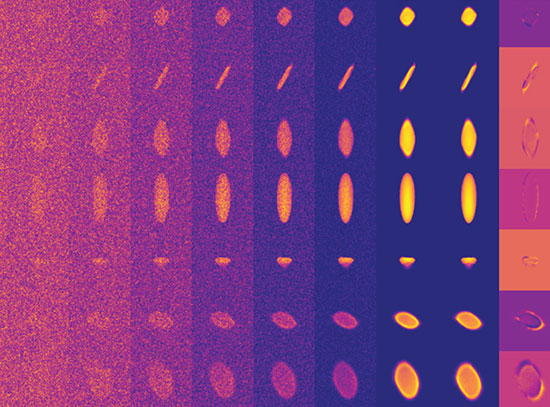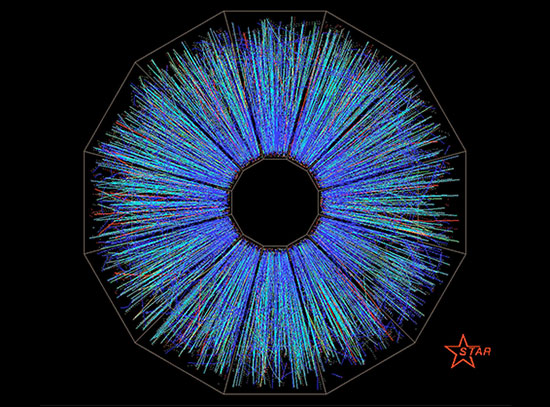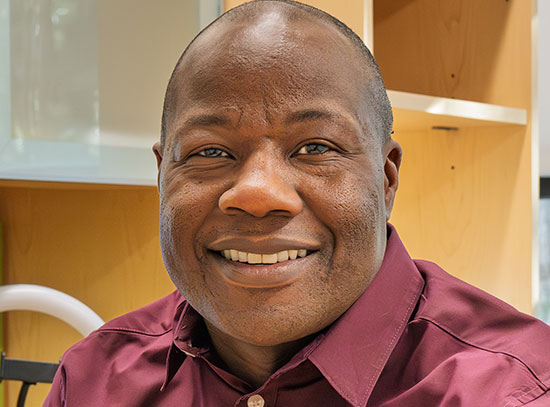Physicist Lawrence Krauss to Speak at Brookhaven Lab on 'Einstein's Biggest Blunder: A Cosmic Mystery Story,' May 30
April 19, 2007
UPTON, NY - Lawrence M. Krauss, Ambrose Swasey Professor of Physics and Astronomy at Case Western University, will give a BSA Distinguished Lecture titled "Einstein's Biggest Blunder: A Cosmic Mystery Story," at the U.S. Department of Energy's Brookhaven National Laboratory on Wednesday, May 30, at 7 p.m. in Berkner Hall. BSA Distinguished Lectures are sponsored by Brookhaven Science Associates, the company that manages Brookhaven Lab, to bring topics of general interest before the Laboratory community and the public. The lecture is free and open to the public. Visitors to the Laboratory age 16 and over must bring a photo ID.
In 1915, Albert Einstein completed the General Theory of Relativity, the groundbreaking theory that laid the foundation for understanding the motion of objects in the universe as well as the motion of the universe itself. In 1916, Einstein added an additional piece to his equations, called the cosmological constant, to account for what he thought was a static universe. About a decade later, however, after it was discovered that the universe was expanding, Einstein called this addition to his theory his "biggest blunder."
Since the 1990s, new observations have led to a revolution in cosmology. The standard model of cosmology built up over 20 years is no longer accepted as accurate. New data suggest that most of the energy density of the universe may be contained in empty space. Remarkably, this is exactly what would be expected if Einstein's cosmological constant really exists. If it does, its origin is the biggest mystery in physics and presents huge challenges for the fundamental theories of elementary particles and fields. Krauss will explain Einstein's concept and describe its possible implications.
Lawrence Krauss is an internationally known theoretical physicist whose studies include the early universe, the nature of dark matter, general relativity and neutrino astrophysics. Born in New York City, Krauss grew up in Toronto, Canada, and he received undergraduate degrees in both mathematics and physics at Carleton University in Canada. He earned a Ph.D. in physics from the Massachusetts Institute of Technology in 1982, then joined the Harvard Society of Fellows. He became a professor in physics and astronomy at Yale University in 1985, and he moved to Case Western University in 1993, where he was named the Ambrose Swasey Professor of Physics, Professor of Astronomy, and Chair of the Department of Physics. In 2002, he became Case Western's Director of the Center for Education and Research in Cosmology and Astrophysics.
The author of over 200 scientific publications as well as numerous popular articles on physics and astronomy, Krauss has also written six popular books, including the international bestseller, The Physics of Star Trek and the award-winning Atom: A Single Oxygen Atom's Odyssey from the Big Bang to Life on Earth…and Beyond. He also writes frequently for The New York Times and appears regularly on radio and television.
Krauss has received numerous awards for his research, writing and lecturing. These include:
- Gravity Research Foundation First Prize Award, 1984
- Presidential Investigator Award, 1986
- American Association for the Advancement of Science
- 1999-2000 Award for the Public Understanding of Science and Technology
- American Physical Society (APS) Julius Edgar Lilienfeld Prize, 2001
- Andrew Gemant Award, 2001
- American Institute of Physics Science Writing Award, 2002
- American Association of Physics Teachers Oersted Medal, 2003
- American Physical Society Joseph P. Burton Forum Award, 2005
In 2003, Krauss was awarded an honorary D.Sc. degree from Carleton University for his scientific contributions and his efforts to improve public understanding of science. Krauss is a Fellow of the American Physical Society and the American Association for the Advancement of Science.
Call 631 344-2345 for more information about the lecture. The Laboratory is located on William Floyd Parkway (County Road 46), one-and-a-half miles north of Exit 68 of the Long Island Expressway.
2007-10622 | INT/EXT | Newsroom










